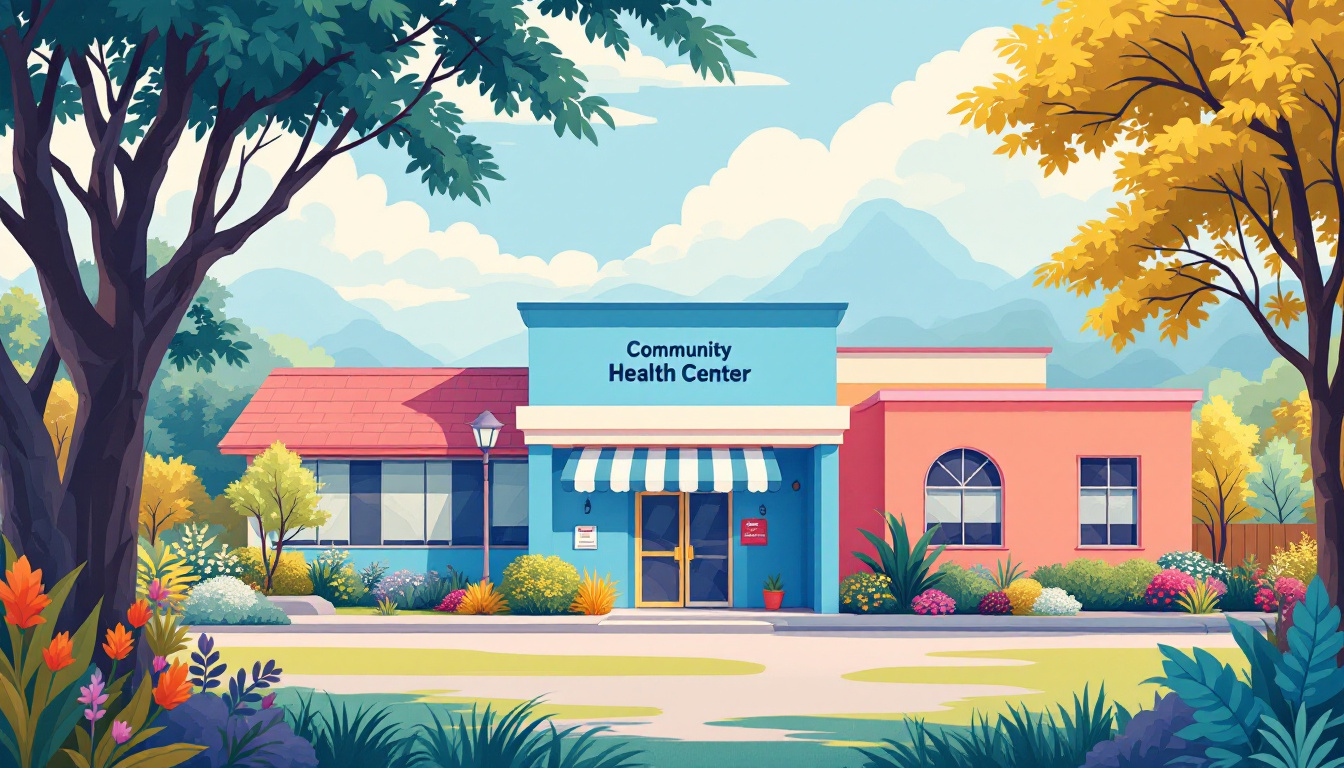FastStats - Older Persons Health
March 5, 2025
Uncover crucial insights into older persons' health with FastStats data. Explore key indicators, disparities, and strategies for improvement.



Understanding FastStats
To gain crucial insights into the health of older persons, it is essential to understand and utilize FastStats. FastStats is a comprehensive and reliable database that provides a wide range of health statistics and data related to older persons' health. This powerful tool offers valuable information for researchers, healthcare professionals, policymakers, and anyone interested in understanding the health trends and challenges faced by older individuals.
What is FastStats?
FastStats is a user-friendly online platform developed by reputable organizations, such as the Centers for Disease Control and Prevention (CDC) and the National Center for Health Statistics (NCHS). It serves as a centralized hub for accessing a wealth of health-related data, including demographic information, health indicators, disease prevalence, and healthcare utilization among older persons.
FastStats allows users to explore data at the national, state, and local levels, making it an invaluable resource for understanding the health landscape of older individuals across different geographical regions. The platform offers various tools, such as interactive charts and tables, to facilitate data analysis and visualization.
Importance of FastStats in Health Research
FastStats plays a vital role in health research, providing researchers with the necessary information to study and assess the health status, trends, and patterns among older persons. By utilizing FastStats, researchers can identify key health indicators, track changes over time, and analyze disparities in health outcomes among different population groups.
The data provided by FastStats enables researchers to identify common health issues affecting older individuals, such as chronic conditions, mental health concerns, and functional limitations. This information is crucial for developing effective interventions, policies, and healthcare strategies targeted at improving the health and well-being of older persons.
Additionally, FastStats allows researchers to investigate disparities in healthcare access and understand the social determinants of health that impact older individuals. This knowledge can help policymakers and healthcare professionals address the specific challenges faced by older persons and implement targeted interventions to reduce health disparities.
By utilizing FastStats data, researchers can contribute to evidence-based decision-making, enhance healthcare practices, and drive positive changes in older persons' health outcomes. FastStats serves as a valuable tool in understanding the complex dynamics of older persons' health and guiding efforts to promote healthy aging and improve the quality of life for older individuals.
Older Persons Health Statistics
In order to gain insight into the health of older persons, it is important to examine key health indicators and identify trends and patterns. FastStats, a comprehensive health statistics database, provides valuable data to understand the health status of older individuals.
Key Health Indicators for Older Persons
When assessing the health of older persons, several key indicators are commonly used. These indicators help to gauge the overall well-being and identify areas of concern. Some of the key health indicators for older persons include:
- Life Expectancy: The average number of years a person is expected to live at a certain age. It provides a general measure of the health and longevity of older individuals.
- Chronic Diseases: The prevalence of chronic conditions, such as heart disease, diabetes, arthritis, and hypertension, among older persons. This helps to understand the burden of chronic diseases in this population.
- Mental Health: The prevalence of mental health conditions, such as depression and anxiety, among older individuals. Mental health is a crucial aspect of overall well-being and must be considered in healthcare planning.
- Functional Limitations: The extent to which older persons experience limitations in performing daily activities, such as walking, bathing, and dressing. This indicator helps to assess the impact of aging on functional independence.
Trends and Patterns in Older Persons Health
Analyzing trends and patterns in older persons' health provides valuable insights into the evolving landscape of healthcare. By understanding these trends, healthcare providers and policymakers can develop targeted interventions to address emerging health challenges. Some trends and patterns in older persons' health include:
- Increasing Life Expectancy: Over the years, life expectancy for older persons has generally increased, indicating improvements in healthcare and quality of life.
- Rising Chronic Disease Rates: With the aging population, the prevalence of chronic diseases among older persons has been on the rise. This places a greater demand on healthcare systems to manage these conditions.
- Mental Health Concerns: Mental health conditions among older individuals, such as depression and dementia, are receiving more attention. Efforts to promote mental well-being and provide appropriate support are crucial.
- Functional Limitations and Disability: As individuals age, there is an increased likelihood of experiencing functional limitations and disability. This calls for comprehensive strategies to enhance independence and quality of life for older persons.
By analyzing these key health indicators and understanding the trends and patterns in older persons' health, healthcare professionals and policymakers can make informed decisions to improve the overall health and well-being of this population. FastStats plays a vital role in providing the necessary data to guide these efforts.

Common Health Issues
As individuals age, they may experience certain health issues that are more prevalent among older persons. These common health issues can have a significant impact on their overall well-being and quality of life. In this section, we will explore three key areas of concern: chronic conditions, mental health concerns, and functional limitations.
Chronic Conditions
Chronic conditions are long-term health conditions that often require ongoing management and care. Older persons are more susceptible to developing chronic conditions due to factors such as age-related physiological changes and cumulative exposure to risk factors over time. Common chronic conditions among older persons include:

Managing chronic conditions in older persons involves a multidimensional approach, including medication management, lifestyle modifications, and regular medical check-ups. It's important to address these conditions promptly to prevent complications and maintain optimal health.
Mental Health Concerns
Mental health is an essential aspect of overall well-being, and older persons are not exempt from experiencing mental health concerns. While many older persons enjoy good mental health, others may face challenges such as depression, anxiety, and cognitive decline. It is estimated that:

Addressing mental health concerns in older persons requires a comprehensive approach that includes access to mental healthcare services, social support, and activities that promote cognitive stimulation and emotional well-being. Early detection and intervention are crucial for better outcomes in managing mental health issues.
Functional Limitations
Functional limitations refer to difficulties or impairments in performing activities of daily living and instrumental activities of daily living. Older persons may experience limitations in mobility, self-care, and independent living. Some common functional limitations among older persons include:

Managing functional limitations involves a combination of physical therapy, assistive devices, and modifications to the living environment to enhance accessibility and promote independence. Rehabilitation programs and support from caregivers play a crucial role in helping older persons maintain their functional abilities.
By understanding and addressing these common health issues, healthcare providers and caregivers can offer appropriate support and interventions to improve the health and well-being of older persons. Regular screenings, proactive management of chronic conditions, and prioritizing mental health are essential components of comprehensive care for older persons.
Disparities and Challenges
In examining older persons' health, it is crucial to acknowledge the disparities and challenges they may face in accessing healthcare and the social determinants of health that impact their well-being.
Disparities in Healthcare Access
Older persons often encounter disparities in accessing healthcare services. These disparities can arise due to various factors, such as socioeconomic status, geographical location, and cultural barriers. Limited financial resources, lack of transportation, and a shortage of healthcare providers in certain areas can hinder older persons' ability to seek and receive appropriate healthcare.
To better understand the disparities in healthcare access for older persons, let's take a look at some key statistics:

Addressing these disparities requires collaborative efforts from policymakers, healthcare professionals, and communities. Implementing strategies like improving healthcare infrastructure in underserved areas, expanding health insurance coverage, and promoting cultural competency in healthcare can help reduce the disparities in healthcare access among older persons.
Social Determinants of Health for Older Persons
Social determinants of health play a significant role in shaping the health outcomes of older persons. These determinants encompass various social, economic, and environmental factors that influence an individual's health and well-being. Understanding these determinants is crucial for developing effective strategies to improve older persons' health.
Let's explore some key social determinants of health for older persons:

Recognizing and addressing these social determinants of health is crucial for promoting the well-being of older persons. Implementing policies and interventions that focus on improving socioeconomic conditions, education, social support systems, and access to healthy food can help mitigate the impact of these determinants on older persons' health.
By understanding the disparities in healthcare access and the social determinants of health for older persons, healthcare providers, policymakers, and communities can work together to develop targeted interventions and policies to ensure equitable healthcare access and improve the overall health and well-being of older persons.

Strategies for Improving Older Persons Health
To enhance the health and well-being of older individuals, implementing effective strategies is crucial. By focusing on preventive healthcare measures, community support programs, and policy implications, we can address the unique needs and challenges faced by older persons.
Preventive Healthcare Measures
Preventive healthcare plays a vital role in maintaining and improving the health of older persons. By adopting proactive measures, individuals can prevent or delay the onset of certain health conditions and minimize the impact of existing ones. Some key preventive healthcare measures for older persons include:
- Regular health check-ups and screenings to detect and manage chronic conditions.
- Vaccinations to protect against infectious diseases such as influenza and pneumonia.
- Encouraging a healthy lifestyle through a balanced diet, regular exercise, and adequate sleep.
- Promoting mental well-being through stress management techniques, social engagement, and cognitive stimulation.
- Fall prevention strategies to reduce the risk of injuries.
By prioritizing preventive healthcare, older persons can lead healthier lives and reduce the burden of healthcare costs associated with managing chronic conditions.
Community Support Programs
Community support programs play a vital role in improving the health and quality of life for older persons. These programs provide various services and resources that address the physical, mental, and social needs of older individuals. Some examples of community support programs for older persons include:
- Senior centers that offer recreational activities, educational programs, and socialization opportunities.
- Home healthcare services that provide assistance with daily activities, medication management, and healthcare monitoring.
- Transportation services to ensure older individuals can access medical appointments, grocery stores, and social events.
- Caregiver support programs that offer respite care, counseling, and education for family caregivers.
- Aging-in-place programs that focus on modifying homes to promote safety and independence.
By investing in community support programs, we can create an environment that supports the health and well-being of older persons and enhances their overall quality of life.
Policy Implications
Addressing the health needs of older persons requires a comprehensive approach that includes policy changes and initiatives. Policymakers play a crucial role in shaping the healthcare landscape for older individuals. Some policy implications for improving older persons' health include:
- Increasing access to affordable healthcare services, including preventive care and specialized geriatric care.
- Promoting age-friendly environments that support active aging, including accessible infrastructure and social support systems.
- Enhancing caregiver support policies to alleviate the burden on family caregivers and ensure their well-being.
- Implementing initiatives to address health disparities among older persons, particularly those from marginalized communities.
- Investing in research and innovation to develop evidence-based practices and interventions for improving older persons' health outcomes.
By incorporating these policy implications, we can create a healthcare system that is responsive to the needs of older individuals and supports their health and well-being.
Strategies aimed at improving older persons' health should be multi-faceted, encompassing preventive healthcare measures, community support programs, and policy changes. By adopting a comprehensive approach, we can enhance the health and quality of life for older persons, promoting healthy aging and enabling them to age with dignity and vitality.
Using FastStats Data
FastStats provides valuable information and insights into the health of older persons. By accessing and interpreting FastStats data, healthcare professionals can gain a deeper understanding of the health trends and patterns among older individuals. This section will guide you on how to access FastStats information and how to interpret and apply it to healthcare practices.
How to Access FastStats Information
Accessing FastStats data is a straightforward process. The following steps outline how to access FastStats information:
- Visit the FastStats website or the specific database where the desired data is located.
- Identify the relevant category or topic related to older persons' health. This could include chronic conditions, mental health, functional limitations, or other key health indicators.
- Navigate through the database to find the specific data tables or charts that contain the information you need. These tables often provide statistical data regarding prevalence rates, incidence rates, mortality rates, and other relevant health indicators.
- Take note of the time period covered by the data, as well as any specific age groups or demographics included in the analysis. This will help ensure the data is applicable to the population you are interested in studying.
- Download or save the data tables or charts for further analysis and reference. Some databases may also offer options to export the data in different formats, such as CSV or Excel files.
Interpreting and Applying FastStats to Healthcare Practices
Interpreting FastStats data requires a careful analysis of the information and an understanding of the context in which it was collected. Here are some key considerations when interpreting and applying FastStats data to healthcare practices:
- Examine the trends and patterns: Analyze the data to identify any significant trends or patterns in older persons' health. Look for changes over time, regional variations, or disparities among different demographic groups. This information can help inform healthcare practices and interventions.
- Compare with national or regional benchmarks: Use FastStats data to compare the health indicators of older individuals to national or regional benchmarks. This allows you to assess whether the health outcomes in your area are better or worse than the average, and identify areas that may require additional attention or resources.
- Identify priority areas: Based on the FastStats data, prioritize areas of focus for healthcare interventions. For example, if the data shows a high prevalence of a specific chronic condition among older persons, healthcare providers can develop targeted prevention and management strategies for that particular condition.
- Inform policy and decision-making: FastStats data can be instrumental in shaping healthcare policies and decision-making processes. Policymakers can use the data to advocate for resources and services that address the specific health needs of older individuals.
By utilizing FastStats data, healthcare professionals and policymakers can gain valuable insights into the health of older persons. This data-driven approach enables the development of evidence-based interventions and policies to improve the health outcomes and quality of life for older individuals.
Sources
https://www.cdc.gov/nchs/fastats/older-american-health.htm
https://guides.library.cornell.edu/c.php?g=241897&p=1608244
https://azhin.org/c.php?g=691531&p=4893867



























































.jpeg)











































































































































































































.avif)























































.jpeg)

































































.jpeg)














.jpg)









































.jpeg)









































































.avif)




.avif)

















































.avif)






































































































































































